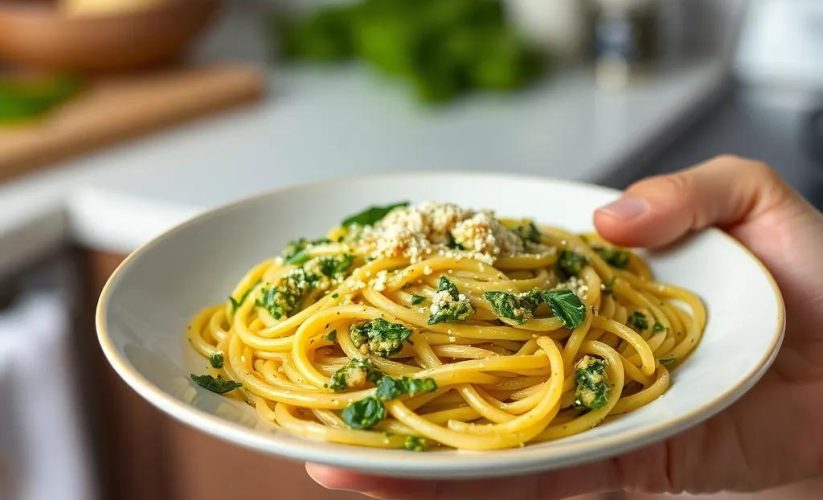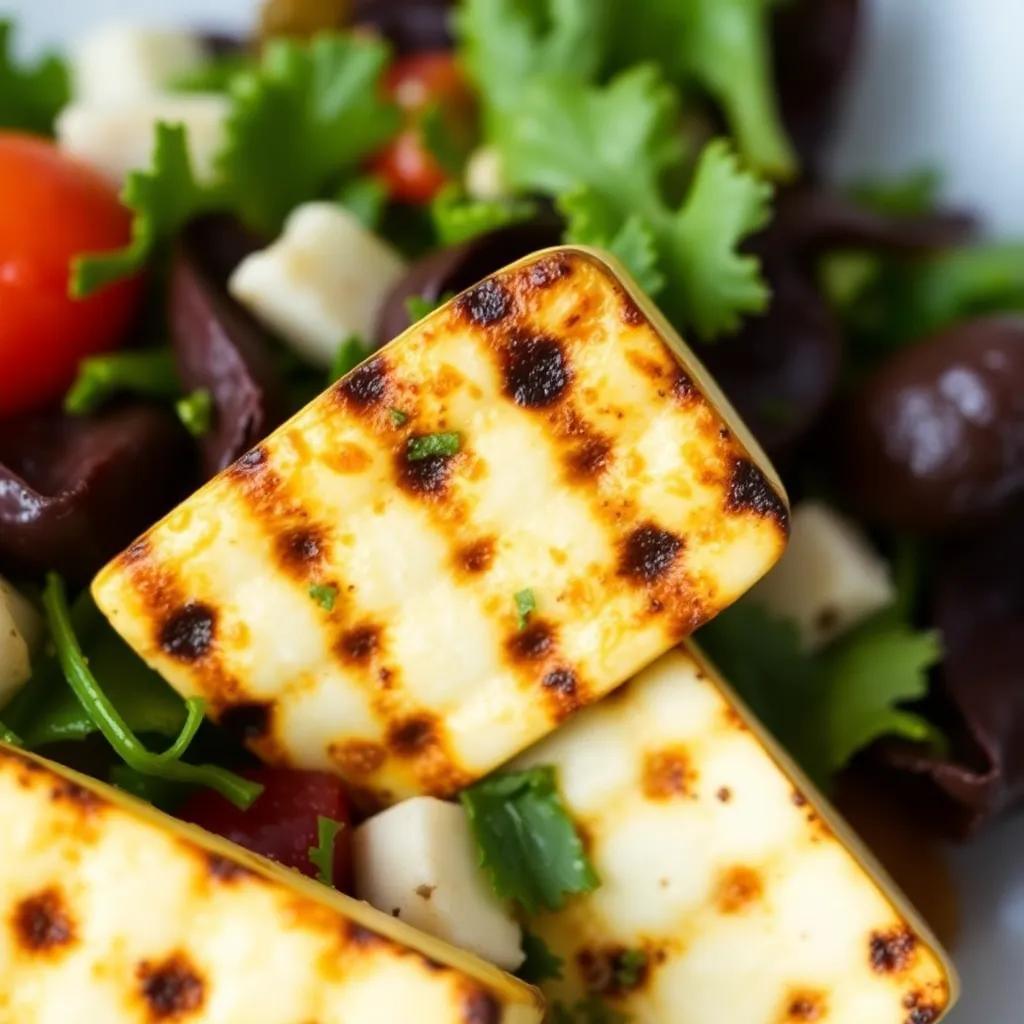Unlock Fresh Flavors: Easy Vegan Fattoush Salad Recipe Guide
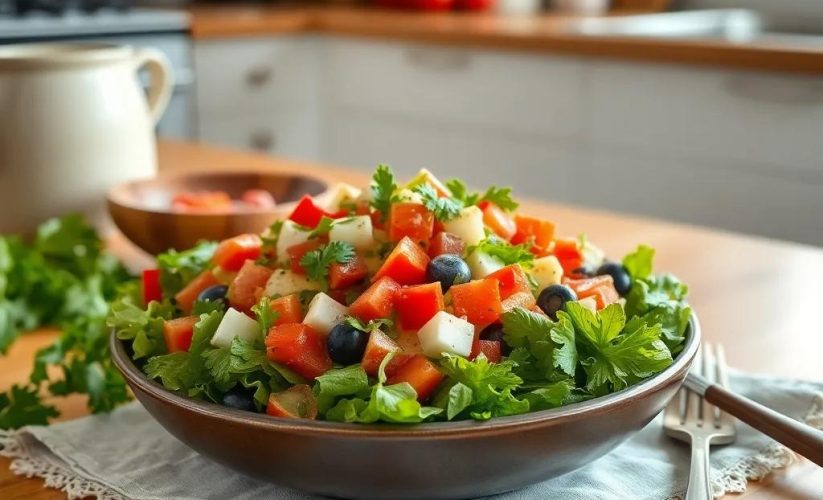
Unlock Fresh Flavors: Easy Vegan Fattoush Salad Recipe Guide
🌍 Cuisine: Middle Eastern
⚙️ Difficulty: Easy
Ingredients
Nutrition Facts
180
Instructions
- Toast the pita breads in a toaster or oven until crisp. Once cooled, break them into bite-sized pieces and set aside.
- Rinse and chop the Romaine lettuce, cucumber, and tomatoes into bite-sized pieces. Place them in a large salad bowl.
- Thinly slice the radishes and green onions, then add to the salad bowl.
- Chop the fresh parsley and mint leaves finely, then toss into the bowl.
- In a small bowl, whisk together the lemon juice, extra virgin olive oil, minced garlic, ground sumac, salt, and pepper to create the dressing.
- Pour the dressing over the salad ingredients and toss gently to combine, making sure everything is evenly coated.
- Just before serving, add the toasted pita pieces to the salad and toss lightly to maintain their crunch.
- Adjust seasoning with extra salt, pepper, or lemon juice if needed.
- Serve immediately for best texture and freshness.
Serving Suggestions
- Serve as a refreshing appetizer or side dish with grilled falafel or vegan kebabs.
- Pair with warm pita bread and hummus for a Middle Eastern-inspired meal.
- Top with toasted pine nuts or walnuts for extra crunch and flavor.
- Add slices of avocado for creaminess and enhanced nutrition.
- Drizzle with a tahini sauce for a richer flavor profile.
- Serve chilled on a hot summer day for a cooling, light meal.
- Pack as a vibrant, healthy lunch for work or picnics.
Table of Contents
- Intro
- Ingredient Notes
- Tips & Variations
- Leftovers & Storage
- Behind the Recipe
- FAQ
- Your Turn in the Kitchen
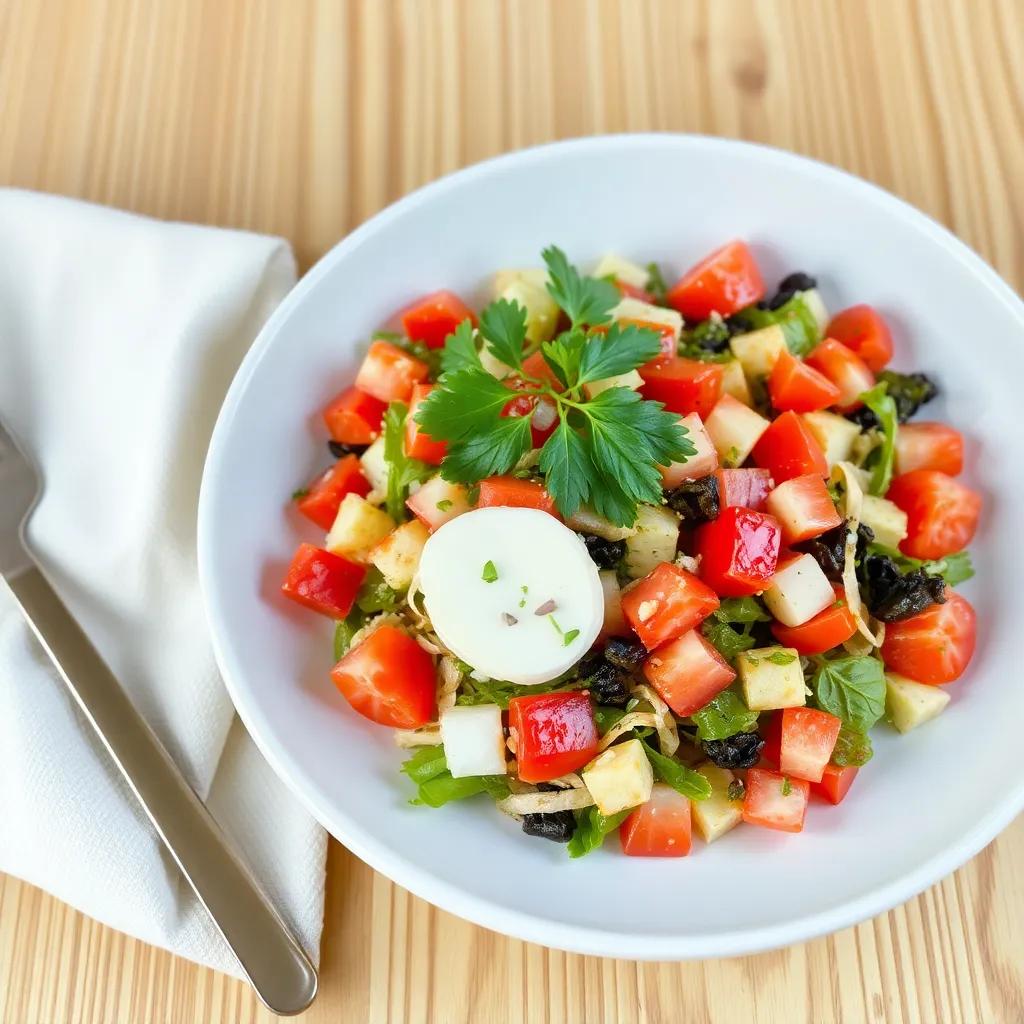
Intro
Bright, vibrant, and incredibly refreshing, this vegan Fattoush salad is your go-to for unlocking a burst of fresh flavors with minimal effort. Perfectly balancing crisp textures with zesty tangs, it’s a dish that feels light yet satisfying—ideal for warm days, casual gatherings, or as a colorful side to complement heartier meals. Whether you’re looking to brighten up your weeknight dinner or impress guests with something effortlessly elegant, this salad brings a delightful twist to your table without any fuss. Its quick prep and simple assembly make it especially inviting for those who want to enjoy wholesome, plant-based eating without spending hours in the kitchen. Embrace the joy of crunchy pita chips mingling with fragrant herbs and a lively dressing that elevates everyday ingredients into a memorable culinary experience.
Ingredient Notes
A few standout ingredients truly elevate this vegan Fattoush salad, lending it its signature freshness and vibrant character. Let’s explore why these elements matter and how to select or substitute them with confidence.
Ground Sumac
Sumac is a tangy, lemony spice central to Middle Eastern cuisine and essential in Fattoush. It adds a subtle tartness that brightens the dressing without overpowering the salad. When shopping, look for deep red to purplish powder stored in airtight containers—this ensures maximum flavor preservation. If sumac isn’t available, a gentle squeeze of extra lemon juice paired with a pinch of mild paprika can mimic some of that acidity and earthiness, though the unique floral sourness of sumac is hard to replicate exactly.
Fresh Herbs: Parsley and Mint
The combination of crisp parsley and cooling mint leaves creates an intoxicating herbal mix that balances the salad’s bold veggies and zesty dressing. For best results, choose fresh, vibrant leaves free from wilting or yellowing. If fresh mint feels hard to find, dried mint can stand in but use sparingly, as the flavor is more concentrated and less bright. Alternatively, basil or cilantro can introduce an interesting twist—just keep in mind the flavor profile will shift.
Toasted Pita Bread
Crunchy, toasted pita is what sets Fattoush apart, adding irresistible texture and a toasty aroma. Using day-old pita makes for easier toasting and better crispness. To achieve the perfect crunch, slice pita thinly and toast either in a hot oven or a skillet until golden brown. Gluten-intolerant cooks can replace pita with gluten-free crackers or toasted chickpeas for crunch, although the traditional bread’s mild flavor and crispness are what truly complete the dish.
Extra Virgin Olive Oil
The salad’s dressing needs a high-quality extra virgin olive oil for its fruity, peppery notes and smooth mouthfeel. When buying, opt for olive oil labeled “extra virgin” with a recent harvest date; fresher oil has brighter flavors. If you prefer a milder taste, light olive oil or a neutral oil like avocado oil can substitute, though some of the characteristic richness may be lost.
By paying attention to these core ingredients, you ensure each bite brims with authenticity and freshness, unlocking the true magic of this easy vegan Fattoush salad.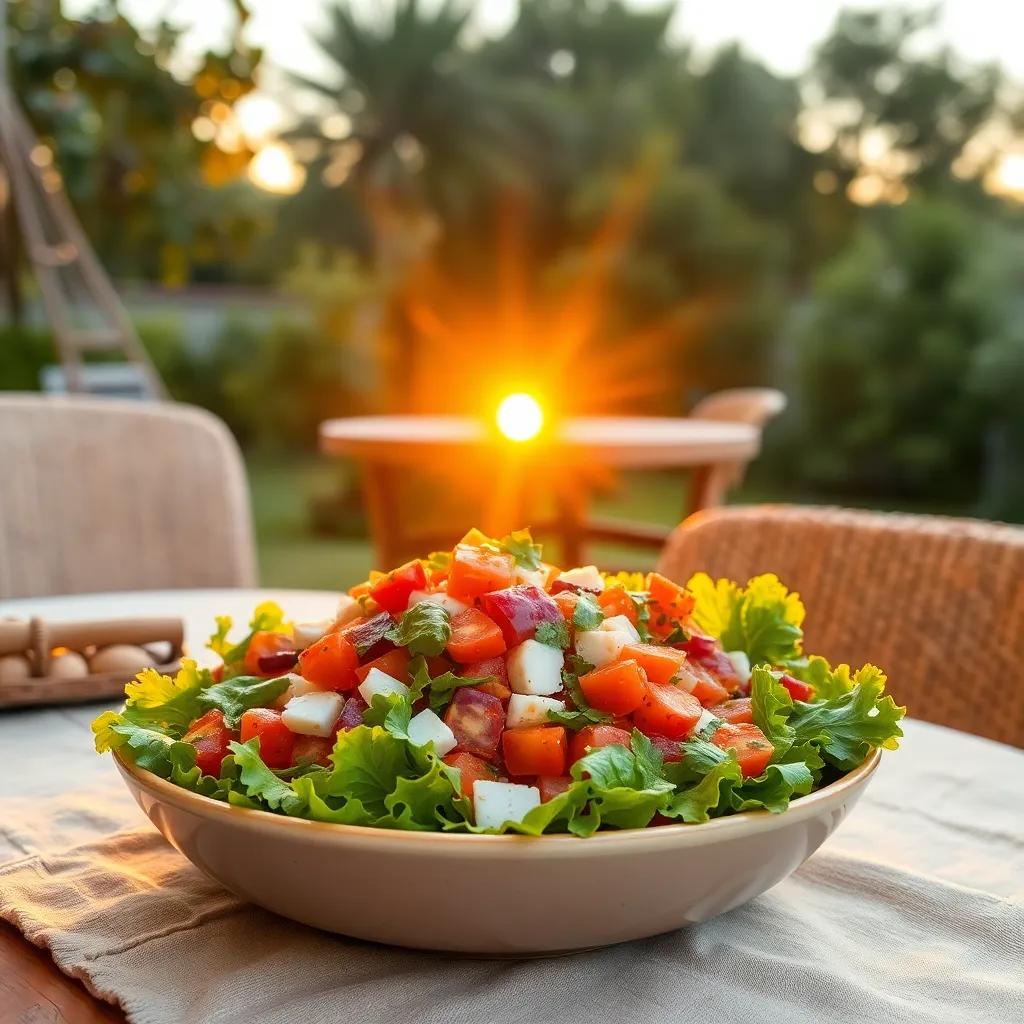
Tips & Variations
To elevate your vegan Fattoush salad to the next level, here are some pro tips and creative variations to tailor it to your preferences and dietary needs:
- Maximize Herb Freshness: For the most vibrant flavor, chop your parsley and mint just before tossing the salad. If you prefer a milder herbaceous note, lightly bruise the mint leaves by folding them gently before chopping. This releases aromatic oils without overwhelming the dish.
- Pita Crunch Hacks: To preserve that signature crunch, add the toasted pita pieces right before serving—not too early or they’ll soften. For a gluten-free twist, try toasted quinoa flakes or roasted chickpeas as a crispy alternative that still holds up well in dressing.
- Amp Up the Umami: Add depth by tossing in a handful of sun-dried tomatoes or roasted red peppers. Another option is sprinkling toasted pine nuts or chopped walnuts on top for a rich, nutty contrast alongside the fresh veggies.
- Customize the Dressing: While the classic lemon, sumac, and olive oil combo is essential, feel free to experiment. Swap lemon juice for pomegranate molasses or tamarind paste for a sweet-tart punch. Incorporating a teaspoon of maple syrup or agave can balance acidity if you prefer a gentler dressing.
- Add Plant-Based Protein: To turn this salad into a heartier meal, mix in cooked chickpeas or grilled tofu cubes. These ingredients complement the crisp greens and bright dressing without masking the salad’s fresh character.
- Spice It Up: For a subtle heat dimension, sprinkle in crushed red pepper flakes or finely diced fresh chili. Alternatively, a pinch of ground cumin or smoked paprika can add warm undertones that echo Middle Eastern flavors.
- Make It Kid-Friendly: Radishes and raw onions might be a bit intense for little ones. Swap radishes for sweet bell peppers or shredded carrots, and omit raw green onions in favor of mild chives or finely chopped celery for crunch without the bite.
- Batch Prep the Components: If you’re meal prepping, keep the dressing and toasted pita separate until mealtime to avoid sogginess. Store chopped veggies and herbs well-sealed in the fridge, then combine everything fresh for optimal texture.
With these tips and variations, your vegan Fattoush salad becomes a versatile canvas—adaptable for any season, occasion, or taste preference while keeping its fresh Middle Eastern roots intact.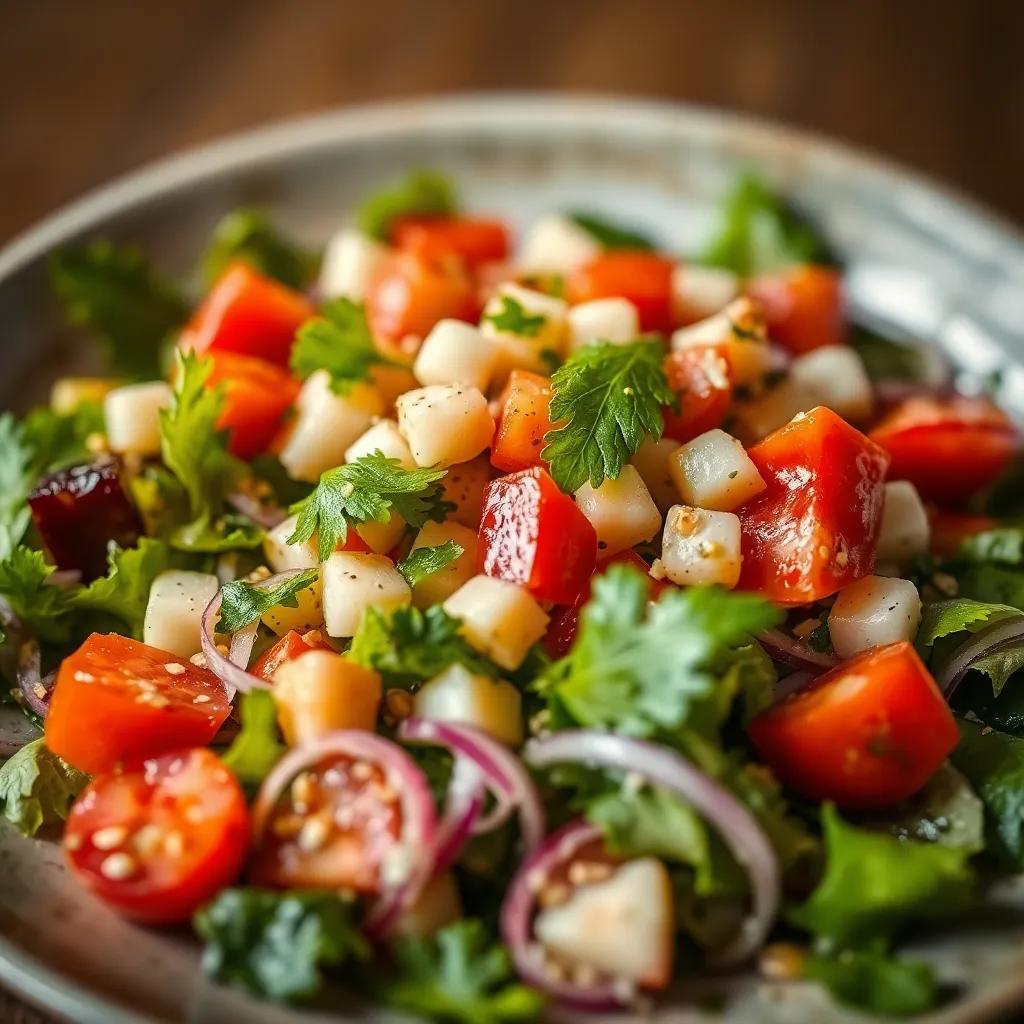
Leftovers & Storage
To get the most out of your vegan Fattoush salad leftovers, proper storage is key to preserving the vibrant flavors and crisp textures that make this dish so delightful. Because the salad features fresh, crunchy ingredients alongside toasted pita, handling each component thoughtfully will ensure your next serving is just as enjoyable as the first.
If you have leftover salad already dressed, transfer it into an airtight container and refrigerate immediately. The salad will stay fresh for up to 1 day in the fridge. Beyond this window, the lettuce and herbs may begin to wilt, and the pita pieces will soften considerably as they absorb moisture from the dressing.
To extend freshness and maintain optimal texture, consider storing the salad ingredients separately if you anticipate leftovers before assembling the dressed salad:
- Vegetables and herbs: Store chopped Romaine, cucumber, tomatoes, radishes, parsley, and mint in a sealed container or zip-top bag with a piece of paper towel to absorb excess moisture. They should keep nicely for 2–3 days.
- Dressing: Keep the lemon-sumac-olive oil dressing in a small jar or well-sealed container in the fridge for up to a week. Give it a quick shake before using.
- Toasted pita pieces: Store them separately in an airtight container at room temperature to preserve crispness. For longer storage, you can freeze pita chips in a sealed bag for up to a month and toast again briefly before adding to the salad.
When ready to serve leftover salad, toss the veggies and herbs with the dressing freshly, then add the toasted pita pieces just before plating to retain their crunch. This approach helps avoid the sogginess that often plagues make-ahead salads containing crispy bread.
For meal prepping, you can easily portion out chopped salad ingredients and dressing into individual containers. Pack the toasted pita separately and combine everything at mealtime. This method makes the Fattoush salad a fresh and vibrant option for quick lunches at work or a light dinner on busy days without sacrificing texture or flavor.
Avoid freezing the fully assembled salad, as the high water content and delicate greens will break down upon thawing and become mushy.
By managing leftovers with a bit of foresight, you can enjoy this bright, zesty vegan Fattoush salad in multiple servings—each as crisp, fresh, and flavorful as the first.
Behind the Recipe
Fattoush is more than just a salad—it’s a vibrant celebration of Levantine culinary tradition that has brought people together at family tables and bustling markets for generations. Rooted in the Middle East, particularly in countries like Lebanon, Syria, and Jordan, Fattoush historically originated as a clever way to revive stale or day-old pita bread, transforming humble leftovers into a colorful, crunchy dish bursting with fresh, zesty flavors. This practical ethos—waste not, want not—turns into a delicious ritual of combining simple, seasonal vegetables with bold herbs and the signature tang of sumac.
This vegan version honors that legacy while embracing modern plant-based eating. The fresh herbs, tart lemon dressing, and that unmistakable crunch of toasted pita echo centuries of tradition, yet the recipe’s ease and adaptability reflect today’s fast-paced lifestyle and diverse dietary choices. The inclusion of sumac, a spice often treasured yet unfamiliar in many Western kitchens, adds an authentic punch that transports you straight to sunlit Mediterranean tables where Fattoush is savored as both a starter and a light main.
Personally, this recipe has always felt like a bridge—connecting the past with present-day flavors, and bringing people together without fuss or formality. It’s a dish I turn to when craving something bright, simple, and satisfying, yet deeply rooted in cultural history. Each bite tells a story of resourcefulness and freshness, of shared meals under warm skies, inviting us to rediscover the joy in everyday ingredients transformed by just the right balance of zest, crunch, and herbaceousness.
FAQ
Can I use pita chips instead of fresh toasted pita bread?
How do I keep the salad fresh without the bread getting soggy?
Can I replace sumac with something else?
Is this salad suitable for gluten-free diets?
What’s the best way to store leftovers?
Can I add protein to make this more filling?
How can I customize the veggies for seasonal changes?
Your Turn in the Kitchen
There you have it—a vibrant, refreshing Fattoush salad that’s as easy to make as it is delightful to eat. Packed with crisp veggies, tangy sumac, and crunchy pita, this vegan recipe unlocks layers of fresh flavors that bring a taste of the Mediterranean straight to your table. Whether you’re looking for a light lunch or a colorful side, this salad is sure to brighten your meal and inspire your palate.
Give it a try, and don’t be shy—share your thoughts, rate the recipe, or tell us about your own creative twists in the comments below. We’d love to hear how you make this classic your own and keep the fresh flavor journey going!


